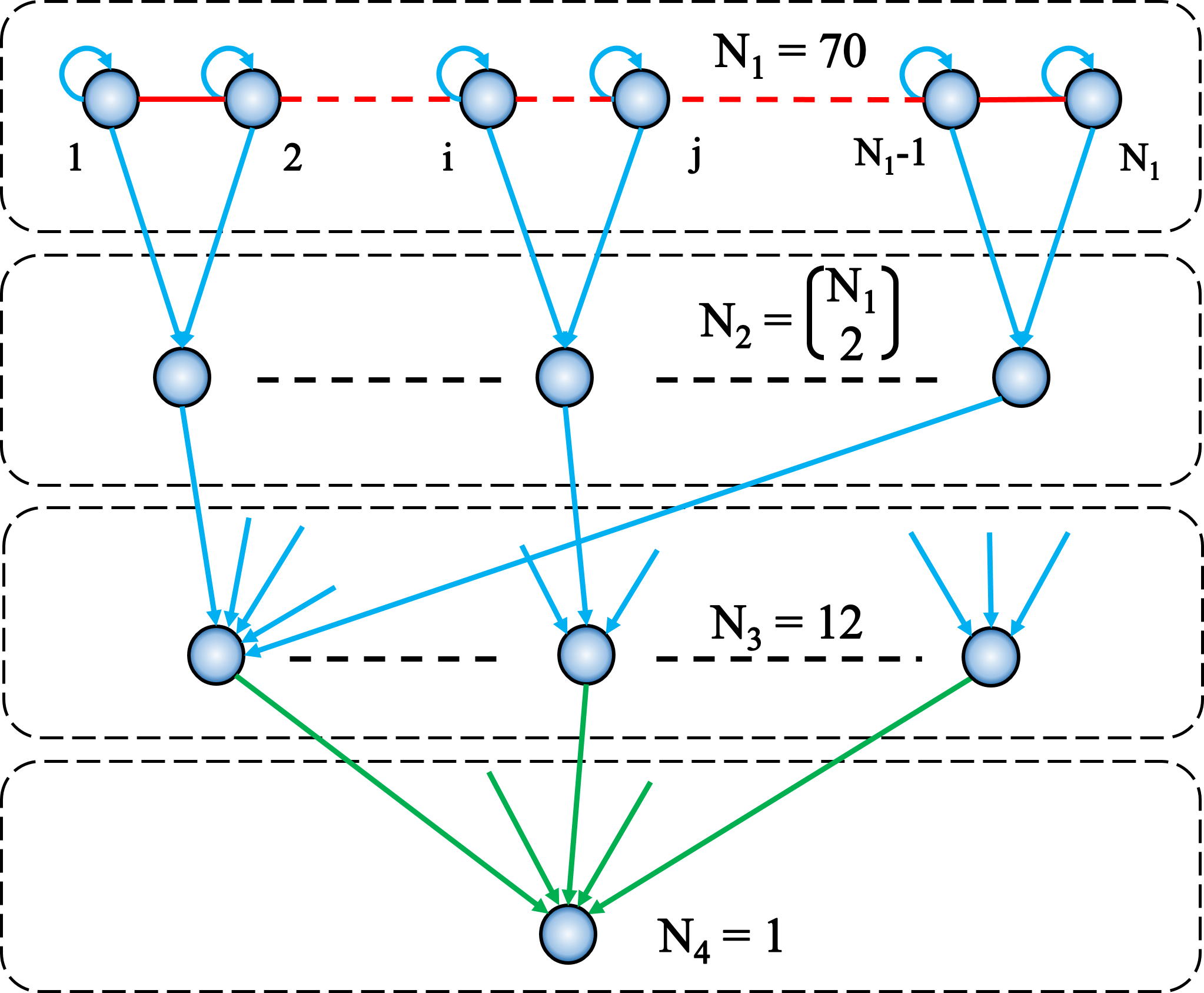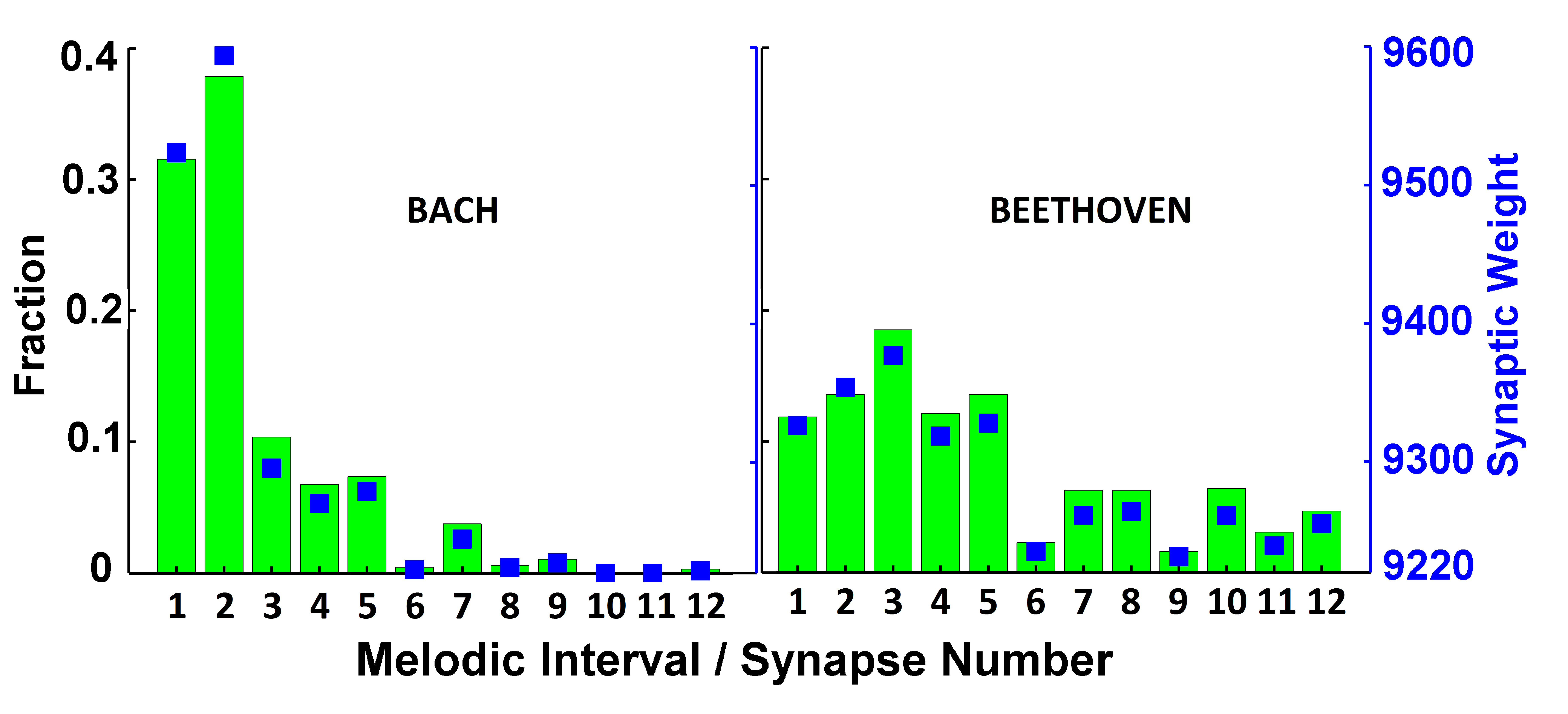Composer Classification based on Temporal Coding in Adaptive Spiking Neural Networks
Guide: Prof. Bipin Rajendran, IIT Bombay
BackgroundEach composer has a specific style of composing music. Given the knowledge about these pecularities, can one classify a previously unheard composition and suggest who its composer is? Music signal being temporally varying, we attempt to solve this challenge by using a spiking neural network with adaptive synaptic weights.
ApproachMelodic interval prevalence is the normalised histogram of the melodic intervals in a composition. The maximum value from the histogram is called the Most Commom Mlodic Interval Prevalence (MCMIP). It has been shown that MCMIP is a useful feature for composer classification. We built a 4-layer SNN which can extract the MCMIP with the help of adaptive weights. Initially, all synaptic weights between layer 3 and 4 are equal. After the composition is presented, they adjust themselves to represent the melodic interval prevalence histogram, thus helping in classification.
The network achieved a classification accuracy of 95.4% for a dataset with 120 compositions each of Beethoven and Bach. The performance feel only by 8% when the standard deviation of noise in network parameters (synaptic weight, noisy input) was increased to 0.5, demonstrating the robustness of the network.
A paper detailing the project was presented at the International Joint Conference on Neural Networks, 2015 held in Killarney, Ireland.

Fig1: 4 layered SNN. The synaptic weights between layer 3 and layer 4 have spiking timing dependent plasticity.

Fig2: This shows the melodic interval prevalence histogram along with the synaptic weights after a composition has been input to the network. One composition each of Bach and Beethoven is shown. The synaptic weights track the histogram well.